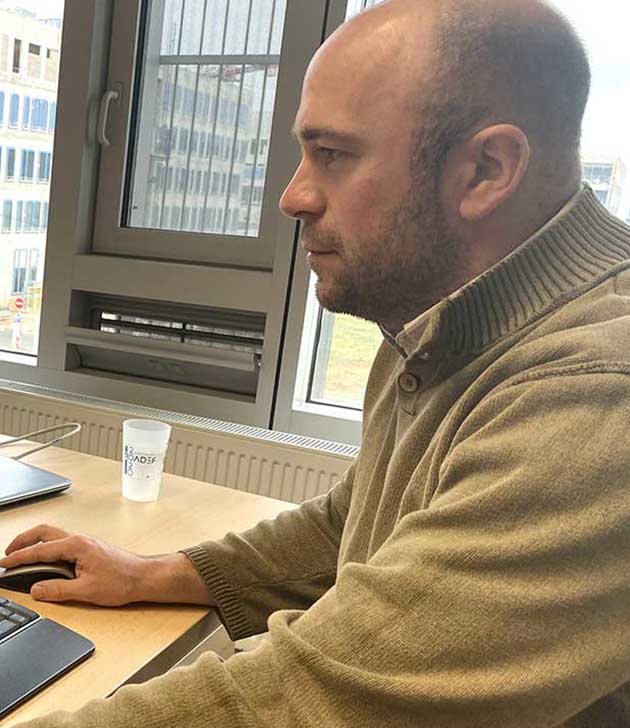The MOSAR platform (Methods and Tools for Operational Safety Assessment and Robustness Analysis of Autonomous Vehicles) offers a methodology and a suite of tools for designing and validating the safety of autonomous vehicles through the use of a database of scenarios.
Automobile manufacturers and equipment suppliers are faced with a major scientific challenge: to demonstrate the safety of the autonomous vehicle in a complex environment, generating a very large number of driving situations in which it must react safely.
The MOSAR platform is the result of the IRT SystemX collaboration with leading French automotive players such as Renault Group, Stellantis, Valeo, AVSimulation and Expleo. This platform provides unique expertise for evaluating the behavior of an autonomous decision-making system based on scenarios derived from driving, accident statistics or expert assessments. MOSAR is available in three modules:
1. The management of scenarios representative of the situations encountered by the autonomous vehicle: the platform provides its users with capabilities enabling the management of a library of reference scenarios and the statistical analysis of situations for the design, validation and approval phases.
2. The combinatorial generation of test cases, the objective of which is to assist in the creation of a validation plan and to generate simulable test cases by exploiting the variability of the scenario parameters to represent the diversity of situations encountered by the vehicles.
3. The execution of tests in simulation and the analysis of the results and the behaviour of the autonomous system under test.
The MOSAR platform offers its users a management of relevant scenarios for demonstrating the safety of autonomous vehicles. Its development was made possible by the successful pooling of scientific and technical skills between IRT SystemX teams and its partners.
Erwan Revert, Software & DevOps Architect, IRT SystemX
Interview
Jean-François SENCERIN
Director of the NFI/PFA Autonomous Driving Programme
How does the French automotive industry approach the challenge of the safety of autonomous systems?
Since the launch of the “France Véhicules Autonomes” programme, coordinated by the Automobile and Mobility sector (PFA), SystemX has played a central role in the field of system security.
Securing an autonomous transport system encompasses several aspects requiring specific approaches depending on the type of system, its environment, operational conditions and the safety levels to be achieved. In particular, it is necessary to:
• secure the system against internal malfunctions (“safety”),
• protect the system from external attacks (cyber security or “security”),
• avoid erroneous decision making by the system, due for example to a misinterpretation of its environment by the system through its sensors (“Safe Functionality” or “Safety Of The Intended Functionality”),
• Prevent the driver or operator from misusing the system (potentially foreseeable misuses).
What role could the MOSAR platform play and what are its main assets to meet this challenge?
For the demonstration of the security of such a system, it is essential to have common methodologies and shared repositories, in particular a catalogue of relevant scenarios. With the introduction of the ISO SOTIF 21448 standard, relating to the implementation of security standards for driver assistance systems, the capitalisation of existing relevant scenarios in a common database has become essential. In this context, SystemX has built a library of scenarios, following a standard data format, and by developing the MOSAR platform. This platform supports a software application called “Scenario Manager” which, in Software As A Service (SaaS), offers features to manage these scenarios. Based on a common data model, MOSAR allows SystemX partners to describe their scenarios via a web interface, within a secure and shared library. These scenarios will then be used for design and simulation activities, validation or approval.
How do you plan its international development?
The results have already been submitted to the various standardisation bodies which are in the process of defining the first standards in the field, to the national and international working groups in charge of future regulations, to the PFA, JAMA (Japanese Manufacturers Association) or the European Commission and the VDA
(German Association of the Automotive Industry). The aim is to place French players at the heart of the construction of the new vehicle ecosystem and autonomous mobility.
Focus
• Renault Group and Stellantis now wish to exploit R&D work developed around the MOSAR platform for their operational needs and federate European or international players via their alliances around a common reference method. It is with this objective in mind that the creation of a dedicated legal entity is being studied.
• The MOSAR platform, referenced by the OICA (International Organisation of Automobile Manufacturers),
has already aroused the interest of renowned players such as BMW, Toyota Europe or the JAMA (Japanese Automobile Manufacturers Association). Usage tests are currently underway.
•Joint work is being undertaken via the ASAM (Association for Standardisation of Automation and Measuring) and the ASC(S (Automotive Solution Center for Simulation) association, which includes BMW, Daimler Chrysler, Porsche and Audi, to converge on the simulation method and the use of the Open Scenario standard resulting from the German Pegasus project.

